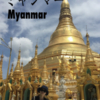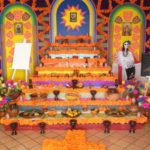vol.3 Feedsack | フィードサック USA
全国のアンティークショップが出店する日本最大の骨董ジャンボリー。ビックサイトのデザインフェスタのあとに立ち寄ってみました。野外の骨董市より、高そうなものが多い印象です。
Japan’s largest antique jamboree with antique stores from all over the country. I dropped by after the Design Festa at Big Sight. I got the impression that many of the items looked more expensive than at an outdoor antique market.

素敵なアンティークの布があるのかな〜と思いながら散策。
藍染の古布、江戸時代の火消しの火事装束、アイヌの催事用の衣装、東南アジアの少数民族の手織り布、明治〜大正時代の女性の着物などなど。アメリカやヨーロッパのヴィンテージやアンテーィークの布も。
民族博物館にあるようなものが手にとれて店主の説明を聞けるのことも、ここのイベントの醍醐味でしょうか。
そして、前から気になっていた、フィードサックを発見。フィードサックとは1920~50年代アメリカの、飼料・穀物をいれる綿袋。かわいいプリントがされており、袋の布を主婦達が再利用するためにとても人気になったそう。いまはヴィンテージコレクションとして、またキルト作家にも人気で、今回もキルト用のサイズ(約22x25cm)で売られてました。フィードサックポーチ、残念ながら完売となりました。
I strolled around, wondering if there were any nice antique cloths. There were old indigo-dyed fabrics, fire-fighting costumes from the Edo period, Ainu festival costumes, hand-woven fabrics of Southeast Asian ethnic minorities, women’s kimonos from the Meiji and Taisho periods, and vintage and antique fabrics from the United States and Europe. The ability to pick up items that could be found in an ethnographic museum and listen to the shopkeeper’s explanations is perhaps the best part of the event.
Then, I found a feed sack that I had been curious about for a while. A feedsack is a cotton bag used to store feed and grain in the 1920s to 1950s in the United States. They had cute prints on them and became very popular because housewives reused the cloth from the sacks. Now they are popular as vintage collections and for quilters, and were sold in a quilt size (about 22x25cm). The feedsack pouch, unfortunately, was sold out.



